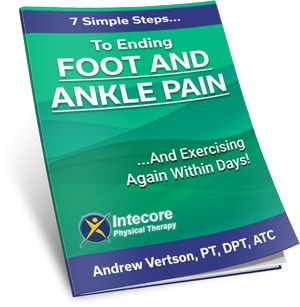
Are you dizzy or unsteady on your feet?
Nauseous and feel like you’re on a boat?
If so, you could be among millions of Americans suffering from vertigo.
Vertigo is one of the most common conditions reported to doctors. Statistics suggest that almost 40% of adults suffer from the condition at some point in their lifetime.
It can be triggered by changes in head position, including bending down or looking up at an angle.
Some patients also experience ringing in the ears (tinnitus), hearing loss, blurred vision, and dizziness, especially when the symptoms are severe. Although it can affect people of all ages, vertigo is more likely to occur in older people.
If you’ve had this condition for a while, you’ve probably already heard that physical therapy could be a potential solution for you.
But does physical therapy for vertigo work, and how might it help your symptoms?
Well, the really great news is that physical therapy can have positive results when treating vestibular balance disorders like vertigo. Physical therapy specifically treats the dizziness and balance problems associated with vertigo.
In addition, we help with vertigo-related symptom management and rehabilitation (learning to walk again without holding onto the countertop, etc.). We can also provide tips on how to change your lifestyle to prevent vertigo in the future.
More Blogs From Intecore
Can High-Intensity Workouts Be Good For Overall Health?
How Can I Improve My Posture During Everyday Activities?
Shoulder Injuries That You Should Be Aware Of
What Is Vertigo And How Does It Affect Your Life?
Do you ever experience a spinning sensation when you’re standing still? Yes. That’s what vertigo feels like – a condition affecting millions of Americans and people worldwide.
Vertigo occurs when you have an imbalance in your inner ear (the part that controls our sense of balance and spatial orientation).
This imbalance can lead to dizziness, nausea, and difficulty standing or walking. It can be physically and mentally uncomfortable and disorientating and impacts your quality of life by making it harder to perform everyday tasks. However, various treatments* and exercises can help alleviate the symptoms of vertigo and improve your overall well-being.
*If you suffer from vertigo and can’t stand the dizziness and disorientation a moment longer, don’t hesitate to contact us to explore your options for treatment.
How Does Physical Therapy Help With Vertigo?
Physical therapy helps to alleviate the symptoms of vertigo by using specific exercises that target the root cause of your imbalance. We work with you to improve your strength, balance, and coordination, leading to better mobility and reduced risks of falls associated with dizziness.
By providing individualized treatment plans and personalized care, we help you regain control over your life and regain confidence in everyday movements.
Exercises You Can Do To Relieve The Symptoms Of Vertigo
If you’re struggling with vertigo, you’ll know that the constant dizziness and imbalance can be exhausting. Unfortunately, nobody really understands unless they’ve had it.
But there are exercises you can try to alleviate your symptoms and (hopefully) start feeling like yourself again. One technique we use is called the “Brandt-Daroff exercise.” This exercise is an effective way to help relieve the symptoms of vertigo. It’s a simple, at-home treatment involving special head and body movements.
When you perform these movements correctly and do them regularly, they can reduce or sometimes even eliminate the dizziness associated with recurrent episodes of vertigo. The exercise requires you to alternate between lying on both sides of your body and sitting up in a V-shaped position.
However, before we tell you how to do it, we must point out that we do not recommend the Brandt-Daroff for everyone with vertigo. For example, if you have an inner ear infection, labyrinthitis, or a condition called “Meniere’s disease,” it’s not for you because it may worsen your symptoms.
So, don’t try this exercise at home unless a physical therapist or physician has identified the root cause of your vertigo and cleared you to perform this exercise without exacerbating your symptoms.
To perform the Brandt-Daroff exercise:
- Start by sitting on a bed or couch with your legs stretched out. Next, turn your head toward one shoulder and hold this position for 30 seconds. Then turn back to the center and lie down on the opposite side. Hold this position for another 30 seconds before sitting up again. Then repeat these movements on the other side of your body. Ideally, you should do this exercise for several minutes twice a day to help reduce your symptoms.
Another exercise you can do that might help is the Gaze Stabilization exercise. To do this exercise, you need to focus on a stationary object while moving your head in various positions.
Finally, the Labyrinthine Head Shake can be helpful for some patients. It involves shaking your head back and forth while lying down to help your brain recalibrate and restabilize your vestibular system and your balance.
Give them a go and see how you feel. But again, do not try any new exercises for vertigo without clearing them with a doctor or physical therapist. In fact, the best way to learn these exercises so you can do them correctly at home is to get a physical therapist to teach you. Otherwise, you could be wasting your time.
Other Ways To Manage The Symptoms Of Vertigo
When you suffer from chronic vertigo and repeated episodes of dizziness, it can really disrupt your daily life. Physical therapy is one of the most effective treatments for vertigo. Still, there are other things you can do to manage the symptoms.
Some people see a reduction in their symptoms with acupuncture to treat vertigo. Rooted in the ancient art of Chinese medicine, this treatment involves a trained practitioner inserting thin needles into specific points on your body called “meridians.” While it may sound intimidating, many people find it relaxing and an effective way to reduce dizziness and nausea. But it’s not always successful.
Another option that can work alongside physical therapy is cognitive-behavioral therapy, which teaches you to challenge negative thought patterns and manage vertigo-related anxiety.
You can also try yoga or meditation to reduce stress and improve balance. Again, there are lots of options, but physical therapy can make the most difference in your symptoms – often eliminating the symptoms altogether in just a few sessions.
Gentle physical exercise, lifestyle modification, mindfulness, and meditation can also help you find comfort in dealing with vertigo.
What Happens During A Physical Therapy Session To Treat Vertigo?
During your first appointment to fix vertigo, expect to discuss your medical history and symptoms, followed by an evaluation and some exercises to determine your current physical abilities.
Feeling nervous or unsure about what to expect at this first appointment is normal, but rest assured. We’re friendly and knowledgeable professionals who will assess your condition and create a targeted treatment plan to help you reach your goals.
During the sessions, we typically assess balance and dizziness levels. We may also evaluate your posture and gait (walking) and assess muscle strength and flexibility. We then use a range of mental techniques to improve your neck mobility and position sense, to reduce the symptoms of vertigo.
Depending on your needs, we may also use therapeutic exercises such as postural control strategies and vestibular rehabilitation exercises that help desensitize your brain to dizziness. In addition, we may include relaxation techniques such as progressive muscle relaxation or meditation in your sessions.
Don’t be afraid to ask questions – we’re here to help you, and the more information you give us, the better we can tailor your treatment sessions.
It’s also important to stay consistent with the home program of exercises we give you to help maximize your progress and make the most of your sessions.
Don’t forget to celebrate your victories at the end of each session, either. Even small improvements are worth recognizing and can help to motivate you to keep pushing forward. Remember that physical therapy is a collaborative effort between you and your physical therapist.
With the right mindset and approach, we can help you work towards a healthier, happier body and NO more dizziness.
Vertigo is debilitating if you don’t treat it and try and ignore it. But don’t give it up. Even if you’ve tried other physical therapists in the past and nothing has worked, with our correct strategies and guidance, you can regain control of your life, and together, we’ll conquer vertigo.
To learn more about how we can help you eliminate the symptoms of vertigo, why not start with a free consultation to discuss your symptoms and get some free advice? We offer this service to all new patients, so you can decide whether we’re a good fit for you before you commit to treatment.
There is no obligation to book more sessions after the consultation, and we don’t require any financial investment to book one of these sessions. It’s a no-brainer.
- What Is Gout? Why It Happens and What You Can Do About It - November 17, 2025
- 3 Essential Back-Saving Tips You MUST Know Before Any Workout - November 14, 2025
- Are You Experiencing Shoulder Pain from Sleeping Wrong? - October 21, 2025
















